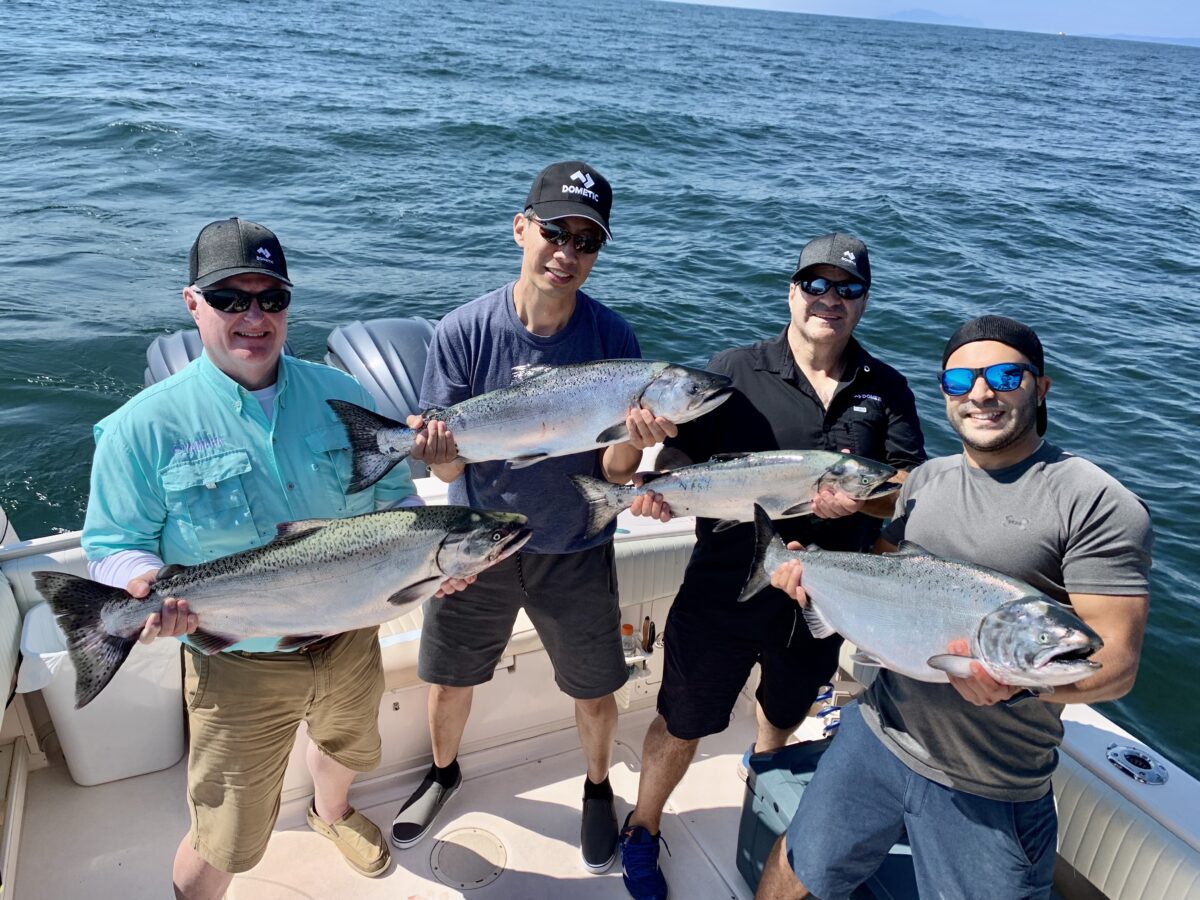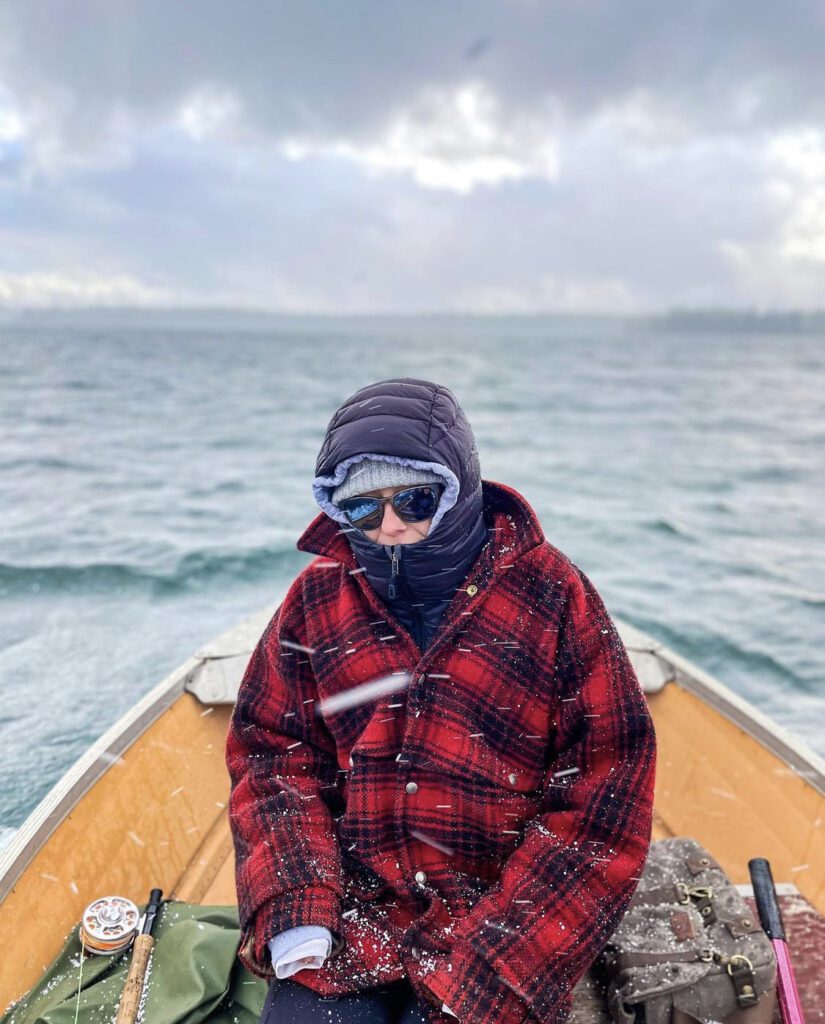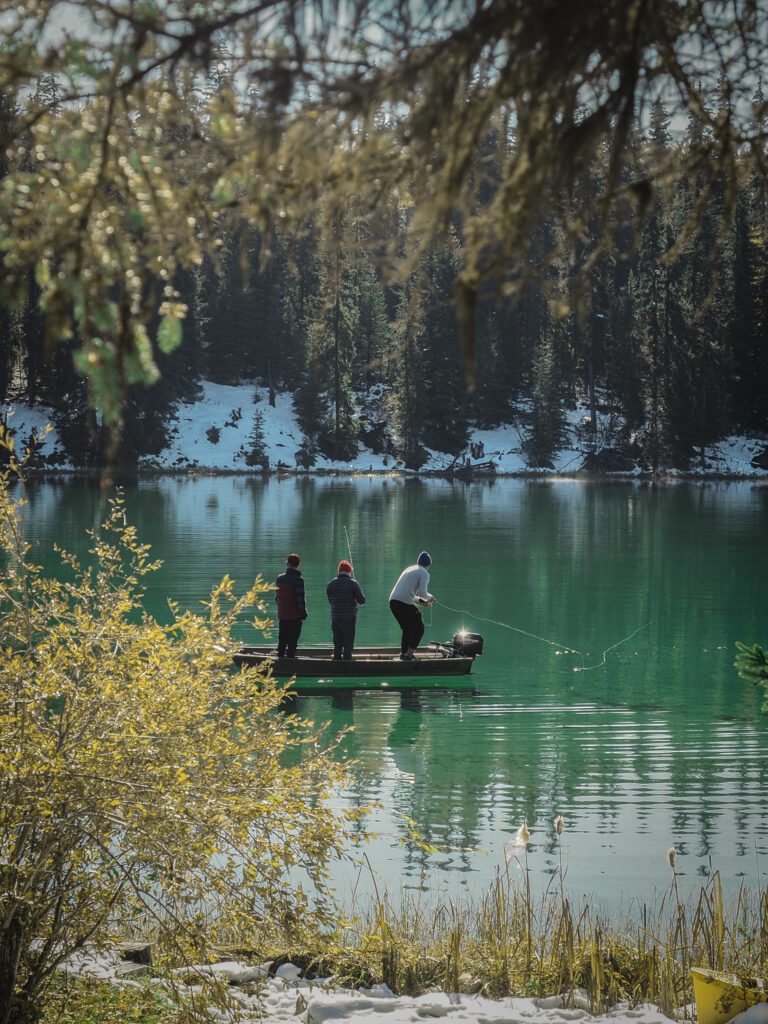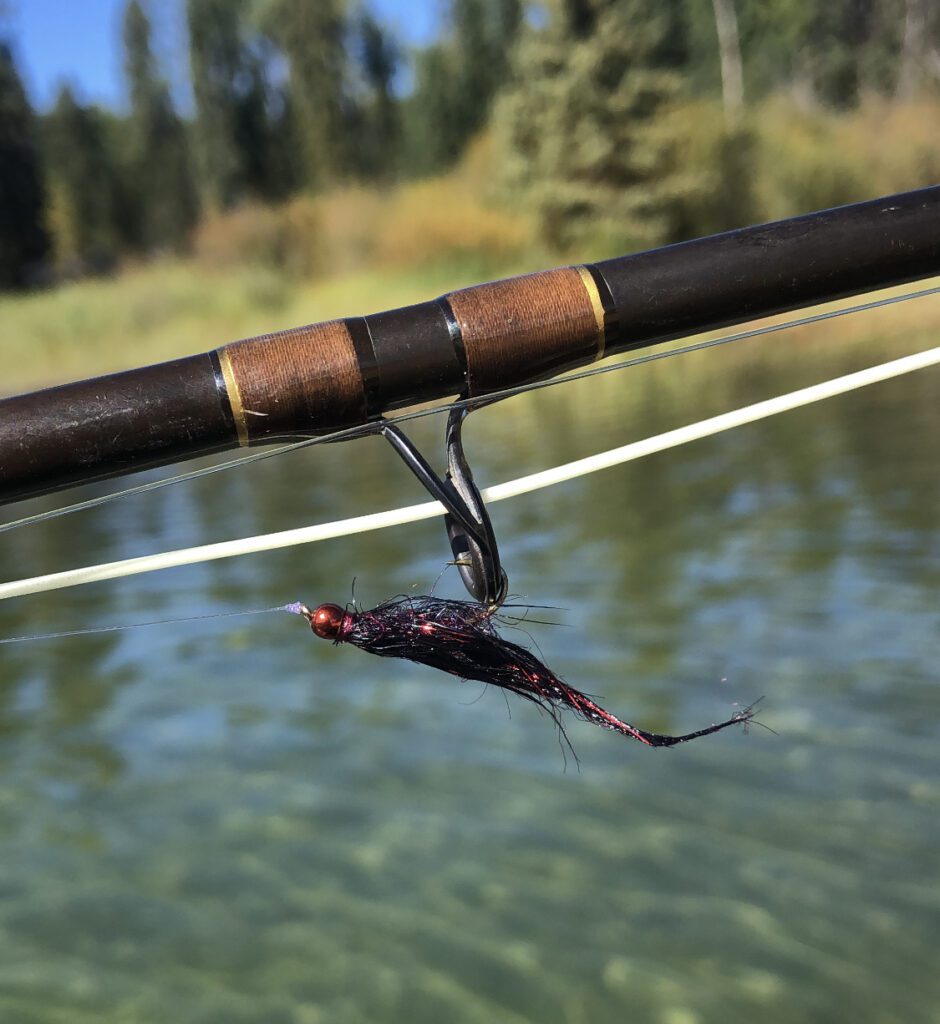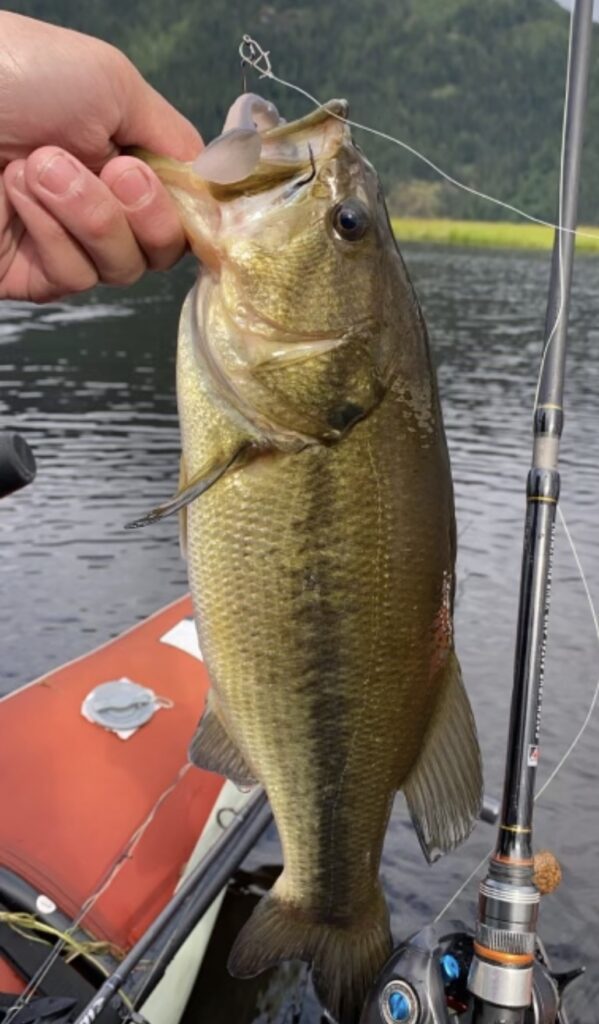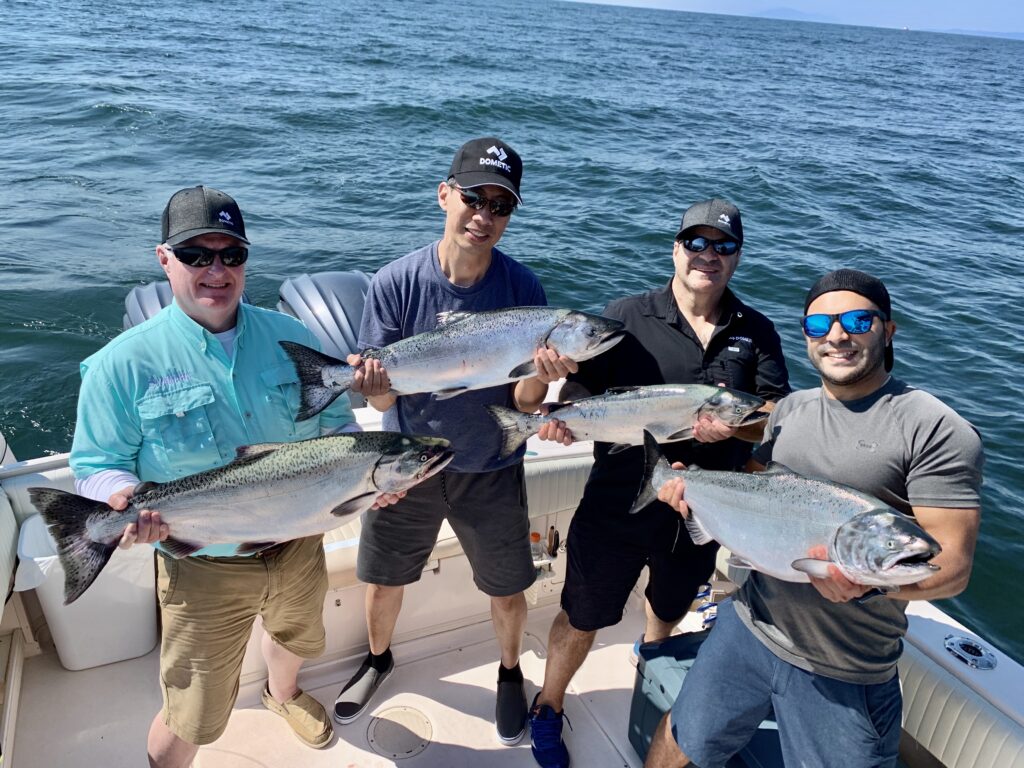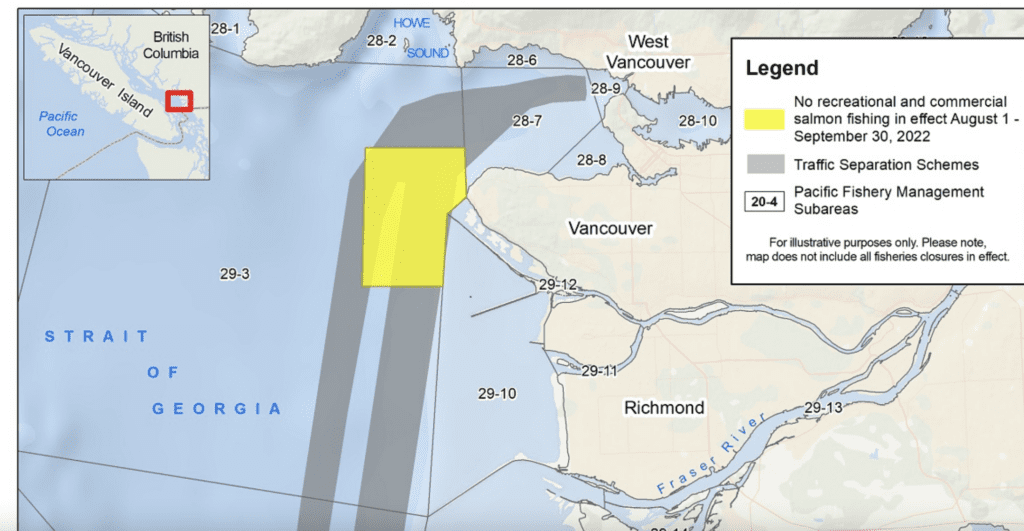OUTLOOK
September is just around the corner! With it things get interesting. Now is the time to make plans, book off a couple of weekends and get the gear ready. With this in mind we have a couple reports looking at the next few weeks of fishing options around the Lower Mainland.
First off is saltwater chinook fishing. September 1 is opening day for the mouth of the Fraser for chinook. Be sure to have a read of Jason’s report for more details on this opening, local fishing and a sockeye update. Again, the outlook on sockeye is not good and it is now very unlikely there will be an opening.
This week is also an important one for the store because it will mark the last report for one of our favourite employees. Sterling is leaving Pacific Angler in September to guide in New Zealand! (We’re already planning our trip there to visit him). For his last report we tasked him with a big one. As many of you know he is a dedicated lake angler and he is going to break down what he looks for in the fall lake season when it comes to water temps, weather trends and his top presentations to use over the next 2 months.
The other big fishery will be river salmon fishing. It usually gets going around the 5-15th of September but it could be worth an early scout soon. Taylor has the details below.
The final fishery we look at this week is the fall bass fishing. This can be a short window that is very dependent on water temps but the fishing can be excellent. Gavin has some tips on what to look for and the strategies for tackling late season bass.
Matt is holding off on doing the video version of the report this week. We want to get more information on sockeye numbers and some clearer numbers on the fall river salmon fishing outlook but he will tune in next week with information.
On to the report!
FRESHWATER FISHING REPORTS
Chilliwack River Fishing Report
When will the fall-run Salmon start showing up in the Vedder/Chilliwack system?”- It’s a question we get a lot around this time of year. The simple answer is “early September”, but the simple answer isn’t really the best answer. Yes, there will be a few Springs trickling into the system in the first week of September, but they are usually very far and few between. As a general rule, the first decent push of fish shows up around the end of the second week of September; there are usually a good number of Springs in the system by the third week of September.
This run is made up almost entirely of white Springs, with the very occasional Coho or red Spring mixed in. The white Springs typically peak around the end of September, which is when the Coho start rolling into the system in decent numbers. The Coho typically peak somewhere in early-mid October, which, coincidentally, is when the Chum start showing up en masse. The Chum will usually peak in mid-late October, with most of the “Tigers” dying off by late November. Of course, there will be some exceptions here; I’ve caught Chum in mid-September and Springs in mid-November, but these are generalizations that a fisherman can plan off.
Weather and river conditions can also affect run timing, so keep that in mind as well.
The white Spring return is likely to be quite significant this year, due entirely to the fact that hatchery production of white Spring smolts was doubled three years ago, as per a mandate from DFO. One would assume that the more you put in, the more come back, so it’ll be interesting to see how much of an increase we’ll actually see.
The Coho return is almost entirely artificial, relying on hatchery production to keep it going, so it doesn’t usually fluctuate too much; I’m expecting it to be more or less the same as it was last year. The high early Sockeye returns across the coast could indicate slightly more favorable ocean conditions in the past few years, so it’ll be interesting to see if that translates to better coho, chinook or chum returns as well or if the issues facing the mid and late sockeye on the Fraser has any correlation to the other species.
This year’s Chum will be the offspring of the 2018 run, which was, if memory serves, decent. It’s hard to say what’ll happen with the Chum, as their returns have been very unpredictable lately. This is likely due to a number of factors, including very heavy fishing pressure in international waters from foreign fishing fleets, poor spawning success rates, and a dozen other environmental and human factors that are hard to correlate. Predicting Salmon runs is tricky business; you basically need a crystal ball these days. I am by no means a fisheries biologist, so I’m just going off info that I have, and my data from previous years.
Should you go fishing now? Right now, is a good time to scout the river and prepare for the upcoming season. The river is fairly low, so it’s not a bad idea to figure out a few spots before the fish show up. You will catch more fish if you take some time to find spots now, as opposed to in the middle of the season. It’s also not a terrible idea to stock up on essential gear now, to avoid stock issues that continue to plague the fishing industry. We’ve got pretty much everything you’d need right now, so drop in and start building those leader boards and fly boxes.
STILLWATER FISHING REPORTS
Fall Lake Season Is Coming
It finally feels like we’re on the backside of summer and can start to get excited for fall fishing. Fall Stillwater fishing is incredibly underrated and can produce some of the best fishing days of the year with big fish to top it off. Fish will start to return back to the shallows as the water cools meaning you’re getting densely populated 4-12 ft shorelines. Pressure on the lakes is minimal compared to what you’ll see in the spring and fish tend to be hungry and looking to fatten up before winter. You won’t see hatches but fish tend to be opportunistic and will investigate your patterns as long as they’re buggy looking enough. Fish will actively patrol weed beds and shoals and tend to be less prey specific. You’ll typically find fish spread across a larger area of shallows as they’re actively feeding amongst the weed beds that have been able to grow for the past 4-5 months. Fishing tends to be quite similar to what you’ll find pre and post-turnover with leeches, scuds, backswimmers, dragons, and blobs dominating the food choices. Another awesome part of the fall is that the water temperatures and oxygen levels are much more stable resulting in less moody fish. Basically what I’m trying to get at is that fishing during the fall is tough to beat due to the active fish, minimal boats, and it’s a change of pace.
Leeches will always be my #1 pattern in the fall. It’s basically a no brainer that a leech should be the first thing out of your box. I’ve written countless articles about how to fish leeches in the past but I’ll go over the main basics. I like using either a floating line or an intermediate sinking line to best fish leeches. I’ll use a floating line with an indicator 90% of the time as the fall takes can be much subtler. I like fishing heavily weighted flies (tungsten bead or even a partially lead wrapped body) to make sure that the fly gets down quick. It’s not uncommon to see fish cruising the shallows in 4-6’ of water and I never want to have to wait for the fly to sink down to their level. Fish are curious creatures and will often come investigate a fly if they see it dropping rapidly through the water column too. I’m aware that no leeches move that quick but it doesn’t have to matter as long as it works as effectively as it does. Any combination of black, brown, red, olive, purple, and blue in sizes 10-16 tends to work well. Each lake seems to have a particular colour that works better but having any assortment of those colours should produce.
Scuds are typically the next most effective fly in the fall. I like fishing hover and intermediate lines for scuds as I tie all my patterns unweighted aside from the standard wire rib. Use a standard 6-9’ leader with 3’ of fluorocarbon tippet and you’re covering the shallows. I’ll use a slow retrieve with a few quicker retrieves mixed in to grab the fishes attention. Weed beds are always a great place to start when fishing scuds as they’ll have grown alongside the plants throughout the summer. I’ve had success working both the edge of the weeds and fishing right amongst the weeds. Look where the fish are jumping and go from there. Scuds tend to take on the colour of the plant life so fish dark brown and olive patterns in darker acidic lakes and paler tan and light olive colours in clear alkaline lakes.
Backswimmers are the next absolute must haves in your box but don’t always expect there to have the fish keying in on them. I’m going to use backswimmers and boatman interchangeably in this article as I fish them the same way. The toughest days in the fall for me is when fish are keyed in on backswimmers and I don’t have the right patterns with me. You’ll know they’re on backswimmers when you see the fish boiling subsurface or when a throat sample reveals dozens of them. You’re not alone if you get skunked with fish boiling around you and you don’t have the right backswimmer imitations. I’d argue that it’s the only prey item in the fall that fish will 100% key in on and not take other patterns. I use a hover line with 4’ of 10-12 lb fluoro and 3’ of 3x fluoro. 3x fluoro might seem like a lot but the take downs on backswimmers is very aggressive so it’s not unusual for them to snap you off on contact. Fluorocarbon has very little stretch, which is why I use the heavier fluorocarbon tippet to have an increased breaking strength. You can also fish them with a full sink lines if you have more floating foam based patterns much like how you’d fish a dragon or booby fly. Let the line fully sink and then strip rapidly with interval pauses.
In other news, this is my final report for Pacific Angler as I’ll be moving to New Zealand at the end of September to guide for the foreseeable future. It has been a great time writing these articles for the past 3+ years and hopefully they’ve helped at least a few people catch fish along the way. I’ll be at the store until September 2nd so feel free to stop by the store if you’ve got any questions about Stillwater fishing. Big thanks to all the great customers and friends who I have met in the shop or out on the water. I will be sending the boys lots of photos of the fishing in New Zealand and I might even submit an article for the report on it in the winter.
Signing Out
Sterling
Fall Bass Fishing
Shorter days and falling leaves in the lower-mainland means river salmon season right? Well, don’t put away your bass rods just quite yet.
Fall is the time of year where things can get quite tricky for bass. A lot of your go-to locations in the summer can turn off overnight. Bass will transition from their summer lies to fall feeding locations before heading to their winter slumber.
With that said, fall can be some of the best fishing of the year as bass are feeding heavily in preparation for the cold winter slumber. They will often school up like the spring time and will feed in open water. This is the time of year where we can stray away from our weedless baits and fish really fun presentations such as crankbaits, spooks, and poppers.
Just like Pre-spawn, fall feeding is highly temperature dependent. The magic number is 60 degrees Fahrenheit, once temperatures drop below that threshold, bass will begin to come out of summer heavy cover in search of schooling bait. Find bass in shallower water, similar to our pre spawn locations, but with an emphasis on feed. The first priority for our fall fish is: “How can I eat a lot without moving much”. We are talking about choke points, transition lines and weed lines. Look for locations bait will be pinned up and forced to move through feeding bass.
Moving baits with a lot of vibration/disturbance will get the attention of a fall bass. Crankbaits such as the Rapala DT-6 and Shadrap are excellent options for covering water. At dawn and dusk, the topwater bite can be unreal, now that they are feeding in open water, treble-hooked baits such as the Rapala Skitter V and Skitter Pop excel.
Focus your time on covering water, find the school and you will be rewarded. Think about it the same way we cover water for steelhead fishing. The more ground you cover the more fish you catch.
Give it a go,
Gavin Lau
SALTWATER FISHING REPORTS
Vancouver Saltwater Salmon Fishing Report
Sockeye Update:
Well, it doesn’t look like we are going to get a sockeye opening. The original run estimate was 9,500,000 and it has been downgraded multiple times and the current run estimate is around 5,000,000. Pretty frustrating considering there has been US commercial fisheries and there are lots of gill nets in the river for First Nation food fisheries. The number of fish required to sustain a modest recreational harvest is miniscule compared to the consumption of these other two user groups, yet we remain closed. Not surprised, as this is consistent with DFO’s lack of respect for public fisheries.
Chinook Update:
We made it across to Gabriola a few times this week and the chinook fishing remains good there. We have been doing well on black or blue glow flashers with blue splatter back hootchies, fished close to the bottom in 150-1250 feet of water.
Remember that on September 1st the mouth of the Fraser will open for chinook again, 2 a day, min size of 62 cm, no max size limit. These fish are nice and shallow, usually in the top 65 feet of the water column. Bait is usually the best producer for these fish, so make sure you have some anchovies or smaller herring ready to go for those Rhy Davis teaser heads.
Also remember that the North Arm area is an SRKW sanctuary zone as of Aug 1. Here is a picture of that zone. Probably the easiest way to stay out of it from a fishing perspective is to fish S of the Iona Jetty, which you can see on this map.
Local Fishing Update:
Fishing along the West Van shoreline from Point Atkinson to the Cap Mouth has been decent this week. We have been getting coho and chinook on most of our trips and our best depths on the riggers has been 35-65 feet. There are also a few Cap chinook starting to show up at the mouth and numbers will build there as we get into September.
See you in the shop or on the water,
Jason Tonelli


